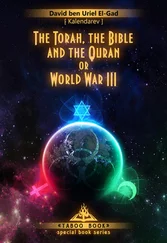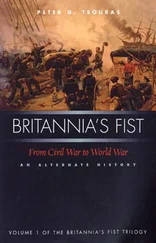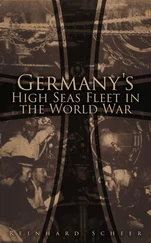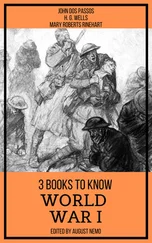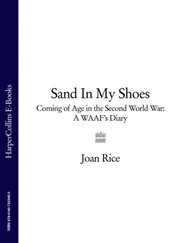87. Three good accounts of O’Connor’s destruction of the 10th Italian Army are: Long, To Benghazi , pp. 143–206; Forty, The First Victory, ; and Correlli Barnett, The Desert Generals , Viking Press, New York, 1961, pp. 19–65, who calls O’Connor ‘the forgotten victor’.
88. Forty, The First Victory, p. 142.
89. Gordon Dickens, Never Late , Australian Military History Publications, Sydney, 2005, p. 61.
90. Handel, Dust, Sand and Jungle , p. 17.
91. Ibid., p. 22.
92. Ibid., p. 26.
93. Gavin Long, Greece, Crete, and Syria , Australian War Memorial, Canberra, 1953 . In the last 200 pages of this book, Long provides a detailed account of the Syrian campaign, describing where appropriate the actions of the cavalry regiments.
1. David Horner (ed), The Battles that Shaped Australia , Allen & Unwin, Sydney, 1991, pp. 2–44. Horner’s account of Pearl Harbor describes both the attack itself and its implications for Australia.
2. Lionel Wigmore, The Japanese Thrust , Australian War Memorial, Canberra, 1957, pp. 143–145.
3. Horner, The Battles that Shaped Australia , pp. 46–99. As for Pearl Harbor, this account describes the campaign as well as its effect on Australia.
4. Dudley McCarthy, South-West Pacific Area, First Year , Australian War Memorial, Canberra, 1959, pp. 79–80.
5. Horner, The Battles that Shaped Australia , pp. 140–167. See also McCarthy, South-West Pacific Area, First Year , pp. 80–83, which includes a good explanatory map of the action and the movements of the naval vessels.
6. The importance of the Battle of Midway in the war in the Pacific, if not in the world war as a whole, is highlighted in Liddell Hart’s History of the Second World War , pp. 349–353. Keegan, The Second World War , pp. 221–229 makes the specific point that before the battle the Japanese had six large aircraft carriers, the Americans three; at the end of the battle they had two each. Naval balance in the Pacific had thus been restored, and the Americans were starting to build new carriers at a pace completely unmatched by the Japanese.
7. Kokoda was re-taken by the Australians on 2 November 1942, and Japanese resistance in the Buna-Gona area ended on 23 January 1943.
8. The American attack on Guadalcanal began with the landing of the US Marine Corps on 7 August 1942, but it took many ferocious land and sea battles before the Japanese finally left the island on 9 February 1943.
9. NAA A5954 555/10.
10. NAA A5954 807/1 folio 1128.
11. NAA A5954 813/2 folio 413.
12. NAA A5954 587/2 ‘Notes on history of tank production in Australia’, para 18.
13. NAA A2671 358/1941.
14. NAA A5954 807/2 folio 1176.
15. NAA A2676 2255 Tank requirements and availability, July 1941 to January 1942.
16. Ibid.
17. Sir Earle Page was an eminent member of the Country Party, and had been Prime Minister from 7 to 26 April 1939. In September 1941 he was sent to London to represent Australia at the British War Cabinet. He was able to keep his colleagues at home closely informed about British Cabinet discussions and decisions.
18. NAA A5954 587/2 para 24.
19. NAA A5954 813/2 folio 496, Advisory War Council Minute 843 para 3.
20. NAA A5954 587/2 paras 25 and 26.
21. NAA A5954 813/2 folio 424, Advisory War Council Minute 683.
22. NAA A5954 807/2 folio 1178, War Cabinet Minute 1718.
23. NAA A5954 807/2 folio 1242, War Cabinet Minute 1853.
24. NAA A981 DEF 59 Part 2.
25. NAA A2671 Agendum 166/1942.
26. NAA A5954 808/1 folio 1325 War Cabinet Minute 2060.
27. Hopkins, Australian Armour, p. 62.
28. NAA A5954 814/1 folio 528, Advisory War Cabinet Minute 914. The Marmon Herringtons were made in Indianapolis, USA, and were intended as an airborne tank. A number of these tanks had been ordered for delivery to the Netherlands East Indies and, following the Japanese invasion, the tanks were diverted to Australia. See Handel, Dust, Sand and Jungle , pp. 56–57; and Fletcher, The Great Tank Scandal , pp. 71 and 79.
29. Mellor, The Role of Science and Industry , p. 317.
30. NAA A5954 587/2 para 29.
31. Ibid., para 30.
32. NAA A2671 244/1942.
33. NAA A5954 folios 563-4, Advisory War Council Minute 964.
34. NAA A5954 587/2 para 31.
35. NAA A5954 814/1 folio 585 Advisory War Cabinet Minute 987.
36. Beale, Death by Design , p. 107. In September 1940 the British War Office received reports that the Germans were developing tanks with armour between 100 and 150 mm thick. They decided to develop a gun capable of penetrating this at a reasonable range, and their specification called for an anti-tank weapon of 3-inch calibre firing a 17 pound shot at a muzzle velocity of 2,700 feet per second. Mock-ups were approved in August 1941, and pilots in October. First deliveries of the production models were made in April 1942, and the field-mounted gun came into general service in 1943. It was the best Allied anti-tank gun produced during the war, and was easily a match for the German 88mm.
37. Australian War Cabinet Minute 987, NAA A587/2 para 43.
38. War Cabinet Minute 2255, NAA A5954 808/1 folio 1392.
39. NAA A5954 669/12.
40. NAA A587/2 para 40.
41. Ibid., para 43.
42. NAA A5954 669/12. The objections raised were extensive and searching. For example, there are thirteen sub-questions to main question No. 4, and the total number of questions asked was twenty-five. See letter dated 5/8/42 from Secretary, Department of Munitions, and Annex ‘A’ of Agendum No. 8/1942 of Prime Minister’s War Conference.
43. NAA A5954 587/2 para 44.
44. NAA A5954 491/2 and NAA A5954 587/2 para 52.
45. NAA A5954 587/2 paras 54 and 55.
46. NAA A5954 814/2 folio 660, Advisory War Council Minute 1085, Section 2 para (a).
47. NAA A5954 491/4.
48. NAA A5954 587/2 para 56.
49. American tank design proceeded along defined chains that contained a large number of prototypes and variations. The main chain of medium tanks in World War II was M3, M4, and M26. The M3 (Lee or Grant) was based on the M2, and the M4 (Sherman) was based on the M3. The M4 had the same basic chassis as the M3, but the great improvement was to do away with the 75mm hull gun and replace the 37mm in the turret with a 75mm. The Sherman was modified as time went by, and the tank was used to make many specialpurpose vehicles such as roller-type mine exploders, flails, bulldozers, rocket-launchers, flame-throwers, etc. At the suggestion of the US Ordnance Department, development of a medium tank to replace the M4 was commenced in early 1942. The pilot model T20 was completed in June 1943. It was armed with a 76mm high velocity gun, and was powered by a 470 hp Ford V8 engine. Trials of the T20 showed several major faults, and only one pilot model was built. The development process continued with the T23 (first pilot model completed in January 1943; the T20 and the T23 were developed in parallel, using different transmissions and suspensions), the T25 and the T26. The T26 had increased armour protection, and both the T25 and the T26 mounted a 90mm gun. The final result of this chain of experimentation was the M26, or Pershing. This had a 470 hp engine and a 90mm gun, and was standardised as the M26 in March 1945. It had taken three years, January 1942 to March 1945, to develop the Pershing, and it was firmly based on a chain of previous tanks. The US Army’s Ordnance Department had a weapons design and production centre, Rock Island Arsenal. When wartime production required rapid and enormous expansion, the design and production expertise to build tanks had already been established, and could be transmitted to the wartime arsenals managed by the commercial firms Ford, Chrysler, Fisher, Baldwin, Lima, and Massey-Harris. For more details see Chamberlain and Ellis, Tanks of the World 1915-1945 , Arco Publishing, New York, 1969, pp. 174–190.
Читать дальше

